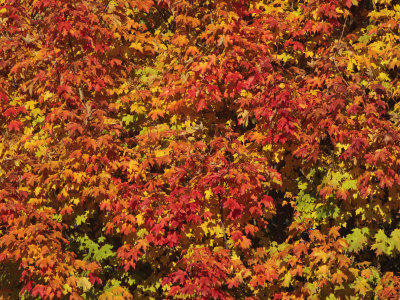Sugar Maple Tree Biography
Sugar maple grows on a wide variety of sites ranging from a site index of about 12 m (40 ft) to nearly 24 m (80 ft) at age 50 (12,17,21,25,46,91). Typical good quality second-growth stands usually fall between site index 17 and 20 m (55 and 65 ft) for sugar maple at base age 50 years. Height growth is slower after age 50 in the eastern regions. Except on the best sites, the depth of the soil and type of parent material has a marked influence on site index (69).
Sugar maple grows on sands, loamy sands, sandy loams, loams, and silt loams but it does best on well-drained loams (30). It does not grow well on dry, shallow soils and is rarely, if ever, found in swamps (30). Sugar maple is soil-site specific in southerly regions but abundant on a wide variety of soils in the northern Lake States. It is mostly found on Spodosols, Alfisols, and Mollisols among the soil orders. In New Hampshire, sugar maple is associated with sites that have abundant organic matter (69), and in West Virginia it is most abundant on areas with high oak site indices (107).
Sugar maple grows on soils ranging from strongly acid (pH 3.7) to slightly alkaline (pH 7.3), but it most commonly grows on soils with a pH of from 5.5 to 7.3 (30). The heavy leaf litter typical of sugar maple tends to modify the pH and nutrient status of the soil. The leaves contain about 1.81 percent calcium, 0.24 percent magnesium, 0.75 percent potassium, 0.11 percent phosphorus, 0.67 percent nitrogen, and 11.85 percent ash, based on dry weight. The pH of
leaves ranges from 4.0 to 4.9. The calcium content remains relatively uniform in trees growing with a pH range of 4.5 to 7.0 but drops as the soils become more acid (5). In the Lake States, sugar maple is found at elevations up to 490 m (1,600 ft)-most commonly on ridges between poorly drained areas and on soil with at least 1 to 1.5 m (3 to 5 ft) to the water table. In northern New England and New York State it grows at elevations up to 760 m (2,500 ft). In the Green Mountains of Vermont and the White Mountains of New Hampshire, especially, the upper limit lies in a sharp horizontal band with a narrow transitional zone into the Boreal forest types. In the southern Appalachians the upper elevation ranges from 910 m (3,000 ft) to 1680 m (5,500 ft), with the lower levels generally restricted to the cooler north slopes. In the southern and southwestern parts of its range, sugar maple more typically grows on moist flats and along ravines at intermediate elevations in the rolling topography.
Sugar maple grows on a wide variety of sites ranging from a site index of about 12 m (40 ft) to nearly 24 m (80 ft) at age 50 (12,17,21,25,46,91). Typical good quality second-growth stands usually fall between site index 17 and 20 m (55 and 65 ft) for sugar maple at base age 50 years. Height growth is slower after age 50 in the eastern regions. Except on the best sites, the depth of the soil and type of parent material has a marked influence on site index (69).
Sugar maple grows on sands, loamy sands, sandy loams, loams, and silt loams but it does best on well-drained loams (30). It does not grow well on dry, shallow soils and is rarely, if ever, found in swamps (30). Sugar maple is soil-site specific in southerly regions but abundant on a wide variety of soils in the northern Lake States. It is mostly found on Spodosols, Alfisols, and Mollisols among the soil orders. In New Hampshire, sugar maple is associated with sites that have abundant organic matter (69), and in West Virginia it is most abundant on areas with high oak site indices (107).
Sugar maple grows on soils ranging from strongly acid (pH 3.7) to slightly alkaline (pH 7.3), but it most commonly grows on soils with a pH of from 5.5 to 7.3 (30). The heavy leaf litter typical of sugar maple tends to modify the pH and nutrient status of the soil. The leaves contain about 1.81 percent calcium, 0.24 percent magnesium, 0.75 percent potassium, 0.11 percent phosphorus, 0.67 percent nitrogen, and 11.85 percent ash, based on dry weight. The pH of
leaves ranges from 4.0 to 4.9. The calcium content remains relatively uniform in trees growing with a pH range of 4.5 to 7.0 but drops as the soils become more acid (5). In the Lake States, sugar maple is found at elevations up to 490 m (1,600 ft)-most commonly on ridges between poorly drained areas and on soil with at least 1 to 1.5 m (3 to 5 ft) to the water table. In northern New England and New York State it grows at elevations up to 760 m (2,500 ft). In the Green Mountains of Vermont and the White Mountains of New Hampshire, especially, the upper limit lies in a sharp horizontal band with a narrow transitional zone into the Boreal forest types. In the southern Appalachians the upper elevation ranges from 910 m (3,000 ft) to 1680 m (5,500 ft), with the lower levels generally restricted to the cooler north slopes. In the southern and southwestern parts of its range, sugar maple more typically grows on moist flats and along ravines at intermediate elevations in the rolling topography.
Sugar Maple Tree
Sugar Maple Tree
Sugar Maple Tree
Sugar Maple Tree
Sugar Maple Tree
Sugar Maple Tree
Sugar Maple Tree
Sugar Maple Tree
Sugar Maple Fall Colors
Florida Sugar Maple Tree








No comments:
Post a Comment